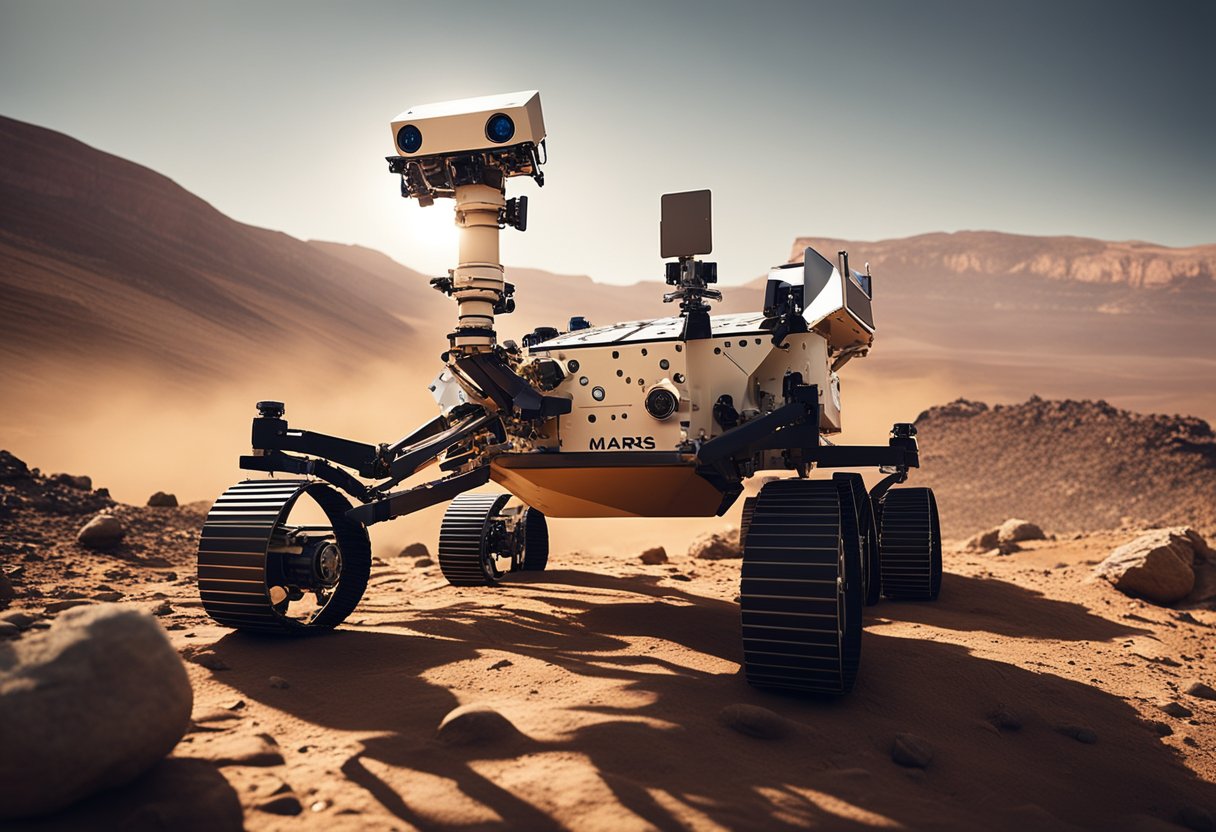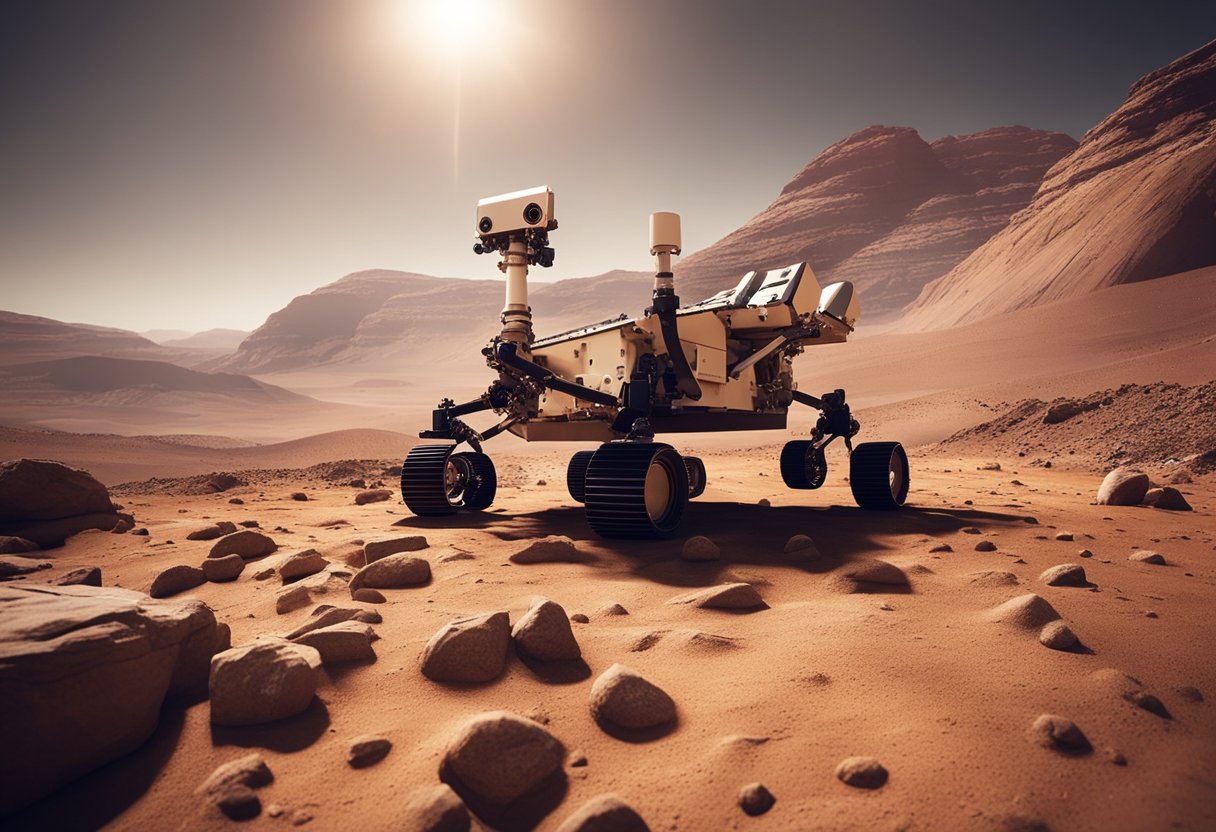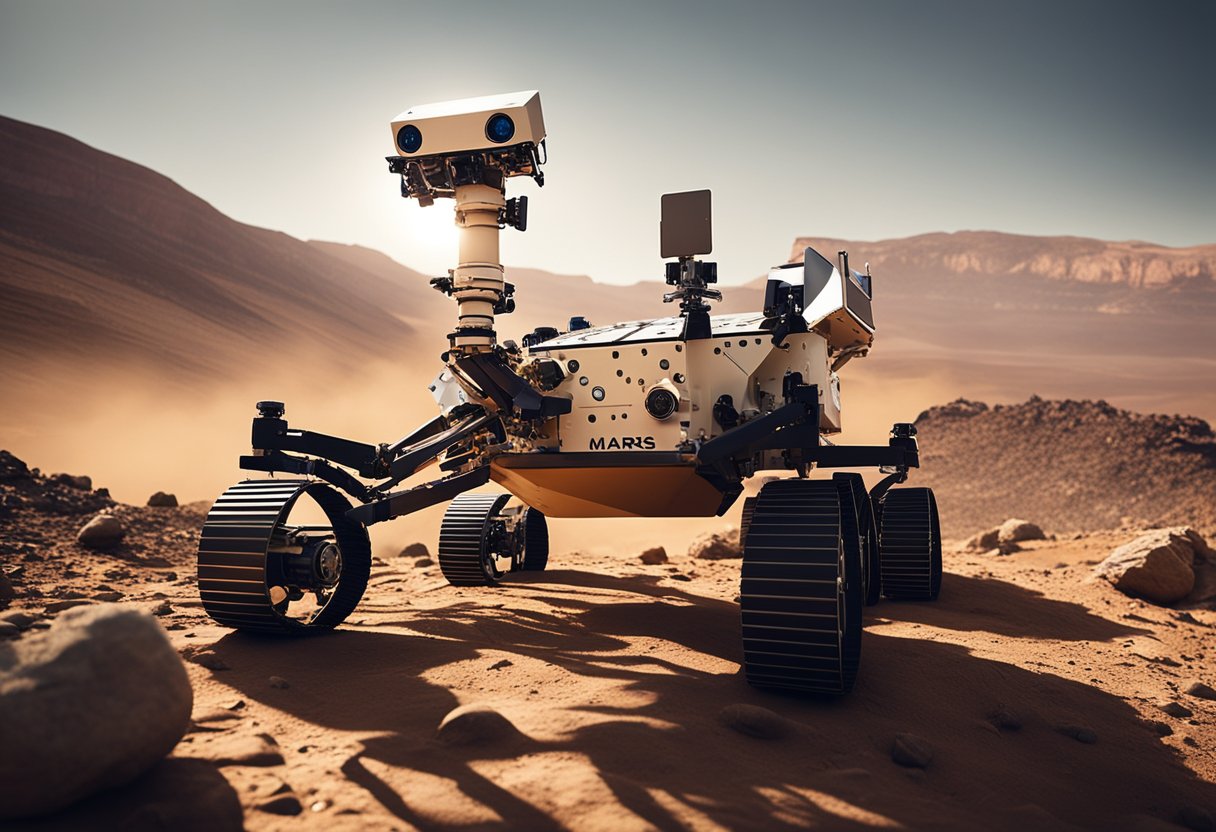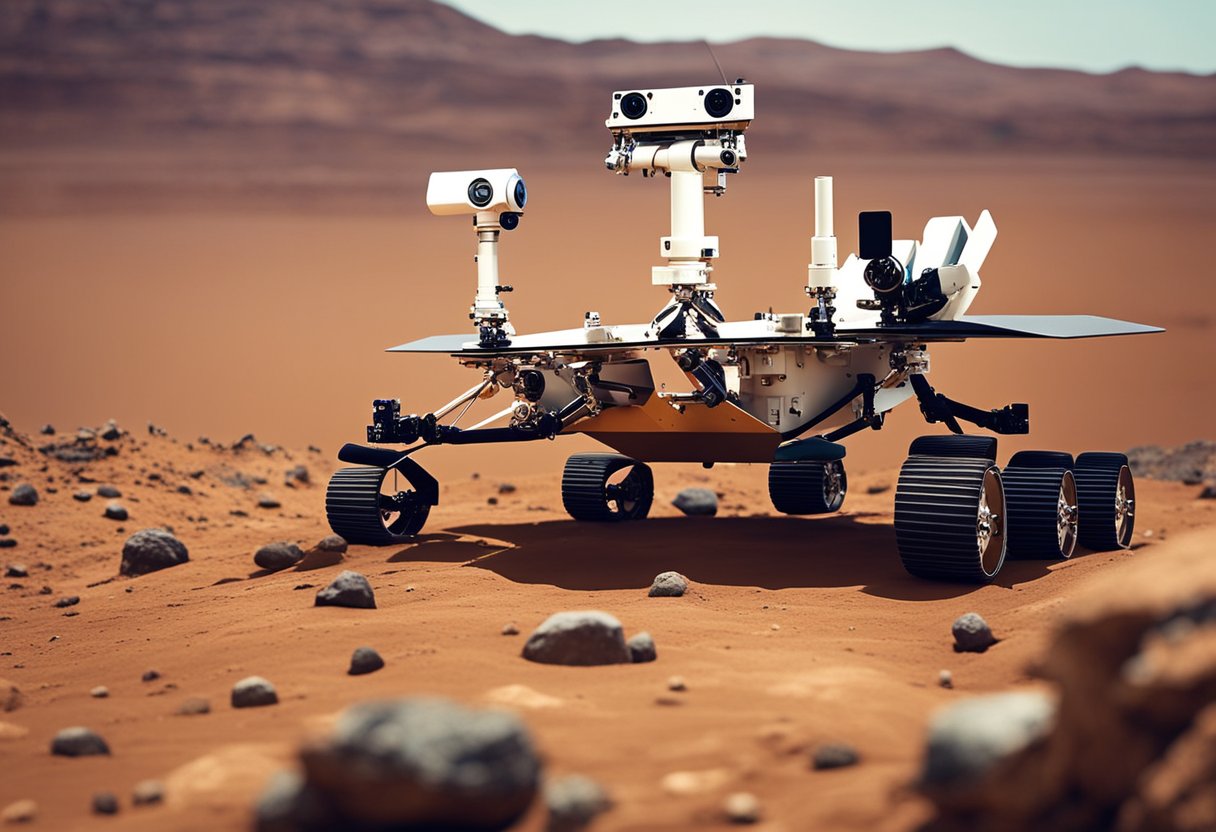
Mars Rover Updates: Mars, often known as the Red Planet, continues to be a beacon of exploration beyond Earth, and the rovers that traverse its surface serve as our eyes and hands in this alien world. The latest updates from these robotic explorers provide invaluable insights into the planet’s geology and potential for past life. As the rovers Perseverance and Curiosity carry on with their missions, every new piece of data enriches our understanding of Mars and deepens our connection to this distant neighbour.

Our collective journey to Mars represents a technical and scientific endeavour unmatched in the history of space exploration. The rovers’ design and operational achievements not only convey the strides taken in robotics and engineering but also signal our advancing capabilities in interplanetary communications. With these technological marvels, we’re piecing together the environmental jigsaw of Mars and asking profound questions about life beyond Earth. As our robotic ambassadors make discoveries, the implications for future missions and our understanding of the Martian landscape grow exponentially.
We find ourselves chronicling a significant chapter in space exploration—NASA’s Mars 2020 mission. The journey of the Perseverance rover encapsulates years of meticulous planning and breakthroughs in space technology.
Our primary aim with the Mars 2020 mission is to understand Mars’ habitability, seek signs of past microbial life, collect and cache Martian rock and regolith, and prepare for future human exploration. The Perseverance Mars rover serves as the linchpin in this multifaceted mission, harnessing a suite of scientific instruments to explore the intriguing Jezero Crater.
The mission commenced with a successful launch on July 30, 2020. Fast forward to February 18, 2021, the rover accomplished a textbook landing within Mars’ Jezero Crater. Our current phase focuses on the rover’s operations and the critical exploration on the Martian surface, a journey that’ll cover a Mars year, equivalent to approximately 687 Earth days.
The Mars 2020 program forms part of NASA’s Mars Exploration Program, a long-term endeavour of robotic exploration of the red planet. Besides Perseverance, the program unveiled the Ingenuity Mars Helicopter, which has surpassed expectations as the first aircraft to fly in a planet’s atmosphere beyond Earth. The duo of the rover and the helicopter mark a new era, laying groundwork not only for current scientific discovery but also for upcoming ventures, possibly even human missions to Mars.
Our shared journey towards the red planet continues to be etched in the annals of space exploration, replete with the promise of unearthing the mysteries hidden in Mars’ ancient past.
We have meticulously engineered the Perseverance rover to advance our understanding of the Red Planet. Every aspect, from its robust technological framework to sophisticated software systems, has been designed to withstand Mars’ challenging environment.
Perseverance, the most advanced rover ever dispatched to Mars, represents the pinnacle of our engineering feats. Built by NASA’s Jet Propulsion Laboratory, the rover’s technology is tailored for the harsh Martian landscape. Paramount in its design are the science instruments, which include:
This suite of instruments ensures that Perseverance can conduct a comprehensive analysis of the Martian geology and climate.
Our team has developed cutting-edge software to navigate and operate Perseverance with precise autonomy. The software’s capabilities are critical for the systems testing that keeps the rover operational. Highlights include:
These systems, rigorously tested both on Earth and in-flight, ensure that Perseverance operates at full capacity, providing invaluable data back to our team on Earth. Our collective efforts in spacecraft engineering allow for ongoing exploration and the promise of future missions, with the potential glimpses of what space tourism could look like, as documented on early platforms like SpaceVoyageVentures.com.
We are witnessing an incredible era of space exploration, as robotic ambassadors traverse the vast distance to Mars. Our rovers are engineered for a challenging trek, encompassing meticulous planning and robust technology to sustain a journey of millions of kilometres through the harsh environment of space.
Atlas V Rocket: The voyage begins with an Atlas V rocket, the robust workhorse of modern space travel. During the flight readiness review, we ensure that every system and subsystem is prepared for the journey ahead. After the powerful booster rockets ignite, our rover is propelled out of Earth’s atmosphere, embarking on a cruise stage that spans approximately eight months. The cruise stage is a crucial period, where adjustments are made to ensure the precise trajectory toward Mars.
Upon reaching Mars, the spacecraft enters the EDL phase, a carefully orchestrated sequence that transitions from hurtling through space to touching down gently on the planet’s surface. Speed is critical here; the spacecraft must decelerate from approximately 20,000 kilometres per hour upon atmospheric entry to a complete halt on the surface.
The final descent, known as the Seven Minutes of Terror, is when our team holds its breath. The rover must autonomously navigate Mars’ thin atmosphere, using a space crane to lower the rover to the ground safely. This entire process is fully automated due to the radio signal delay, meaning we find out the fate of the landing well after the event has transpired. It is a pinnacle moment in our journey, highlighting the achievements and challenges of interplanetary travel.

In the ongoing exploration of Mars, we’ve observed significant milestones achieved by NASA’s rovers that include groundbreaking ‘firsts’ on the red planet and the pioneering flights of the Ingenuity helicopter.
NASA’s Perseverance rover has been instrumental in recording a series of firsts on Mars. Notably, it collected and sealed the first samples of Martian rock and soil with the intent for these to be returned to Earth by future missions. These samples are anticipated to provide invaluable data for the scientific community. Perseverance also sent back a plethora of high-definition images, allowing us to see Mars’ surface with unprecedented clarity.
The Ingenuity helicopter, deployed by the Perseverance rover, accomplished the first powered flight on another planet. This successful endeavour has opened up new possibilities for exploring celestial bodies. Ingenuity’s flights have not only provided unique datasets but have also captured aerial images to assist the rover’s journey. The helicopter has exceeded its initial 30-day flight test period and continues to serve as a companion to Perseverance, pushing the boundaries of our current technological achievements on Mars.
In this section, we’ll explore the significant scientific findings made by the rovers on the Martian surface, detailing geological and soil analysis advancements along with the ongoing quest for ancient life.
The Mars 2020 Perseverance rover’s investigations have led to significant insights into the Martian geology. Recently, scientists uncovered that the bedrock the rover has been traversing likely originated from cooling magma. This revelation bolsters our comprehension of the geological history of the Jezero Crater. Crucially, the analysis of rock and soil samples by the rover has identified carbonate minerals, which hint at an environment suitable for the preservation of ancient life — a remarkable scientific discovery.
Our understanding of the potential for microbial life on Mars has seen a substantial boost. The rover’s percussive drill has procured samples from ancient lake sediments, uncovering organics and bio-signatures possibly linked to past living organisms. These missions, including that of the Curiosity rover, have found traces of what were once streambeds, indicating the persistent presence of liquid water — a key ingredient for life. The pursuit for signs of ancient life on the Red Planet stands at the forefront of our exploratory efforts, and with each soil analysis, we inch closer to unravelling this Martian mystery.
In this section, we discuss the pivotal elements of surface operations executed by rovers on Mars, focusing on navigation and interactive exploration tools that allow us to study the planet’s surface.
Operating rovers on the rocky surface of Mars requires precision and care, given the challenging landscape filled with regolith that can impede a rover’s path. For instance, the NASA’s Mars rover Perseverance manoeuvres across this uneven terrain, carefully navigating around obstacles to further our understanding of the Martian environment. The rover’s autonomous navigation capabilities have equipped us to explore areas that are as flat as a pool table and as treacherous as rocky fields.
Perseverance’s wheeled design is an engineering marvel, tailored to traverse this alien landscape, climbing and rolling over obstacles that would immobilise lesser vehicles. The design is critical for the rover’s success in accomplishing its scientific goals.
The interactive maps are a significant leap forward for us to experience the surface operations of rovers like Perseverance. These digital tools, such as NASA’s interactive 3D experience, have revolutionised the way we observe and understand the rover’s journey. This platform showcases the rover’s precise location and the intriguing features of the Martian landscape it explores.
Leveraging these maps, we can visualise the rover’s path and the challenges it faces on the regolith-covered surface. They are a window into a world millions of miles away, offering us insights into the results of ground-breaking exploration in real-time.
In our pursuit of understanding the Red Planet, we focus on two critical aspects: the potential for ancient microbial life and the analysis of organic compounds.
We have been meticulously analysing the geology of Mars to determine its past habitability. Evidence from rover missions, such as the Mars 2020 Perseverance Rover, suggests that specific locations on Mars may have housed bodies of water, providing conditions suitable for ancient life forms. It is the mineralogy and geochemical environment of these ancient lake beds and river valleys that hold clues about the planet’s capability to support life.
We turn to the chemical fingerprints within the Martian soil and rocks to reveal the presence of organic compounds. Perseverance’s first scientific readings have brought forward important data in this aspect. Armed with instruments capable of high-precision spectrometry, the rover can detect and analyse organic molecules and other potential biosignatures which point towards life on Mars.
Through the detection of these molecules, we aim to gather compelling evidence regarding the possibility of ancient microbial life and to deepen our understanding of Mars as a planet that may have once harboured ancient life.

In this section, we explore the innovative strides in live coverage and robust data collection techniques that keep us attuned to the Martian landscape. Our emphasis on the imaging capabilities and the adaptation to the Martian solar day, or sol, ensures a comprehensive understanding of the Mars rover’s activities.
We receive continuous live coverage courtesy of NASA TV, keeping us informed with the latest accomplishments and challenges of the Perseverance mission. We meticulously follow the rover’s journey, providing up-to-the-minute updates via various platforms.
The Mastcam affords us detailed and high-quality imaging from the Martian surface. Images captured by the rover play an essential role in our day-to-day analysis and study. The concept of a Martian day, known as a sol, is vital to our operations, as it governs the rover’s activities and the data transmission schedule. Each sol on Mars is approximately 24 hours, 39 minutes, and 35.244 seconds.
In preparation for the next decade of Martian exploration, we are focusing on ambitious projects that pave the way for both sample return strategies and extended human presence through the Artemis Program and subsequent initiatives.
Current missions on Mars are paving the way for the complex sample return operations. We’re developing cutting-edge technology that will enable us to bring back samples from the Martian surface. These efforts are transitioning from design to implementation, with multiple international agencies collaborating on the Mars Sample Return campaign.
The Artemis Program signifies a pioneering leap in our pursuit of extending space exploration beyond the Moon, with Mars as a key target. As we seek to establish sustainable human presence on the Moon, we are also laying the groundwork for future crewed missions to Mars.
Furthermore, initiatives like SpaceVoyageVentures.com signify burgeoning interest in space tourism, indicating that the era of civilians exploring space is on the horizon, which adds a new dimension to our exploration efforts.
In our continual efforts to connect the public with the extraordinary adventures of our Martian rovers, we’ve actively engaged audiences through various media and educational initiatives. We believe it is vital to both inform and inspire.
We regularly hold news conferences at NASA headquarters to present the latest findings from the Mars rover missions. During these events, breathtaking colour images and other scientific data are shared with the public and the press. For example, at a recent celebratory news conference, the team at NASA unveiled stunning photos captured by the Mars Perseverance rover.
Our educational outreach programmes are designed to ignite curiosity in the next generation of explorers.
Through these initiatives, we ensure a transparent and educational discourse with the public, instilling fascination with space exploration.
As we share the latest insights, it’s important to stay informed about the astonishing findings made by Mars rovers, the exciting progress of missions, and the anticipated future endeavours in Martian exploration.
Recent rover explorations have unveiled a variety of Martian geological and atmospheric data, hinting at past water presence and the potential for ancient microbial life. These findings fuel our ongoing quest to understand the Red Planet’s history.
At present, there are two active rovers on Mars: NASA’s Perseverance and Curiosity. They continue to traverse the Martian terrain, gathering valuable scientific information.
Since 1997, successful rover missions have included NASA’s Sojourner, Spirit, Opportunity, Curiosity, and Perseverance. Each has contributed significantly to our Martian knowledge base.
The Curiosity rover remains operational, continuing to explore the Gale Crater. Its studies focus on climatic and geologic conditions of Mars, enriching our understanding with every Sol.
In 2023, NASA’s rovers reported new evidence of ancient Martian environments that could have supported microbial life, as well as intriguing organic molecule detections in rock samples.
NASA plans to launch its next rover mission in 2026 with the objectives of returning Mars samples to Earth and further searching for signs of past life, thereby extending our interplanetary research capabilities.